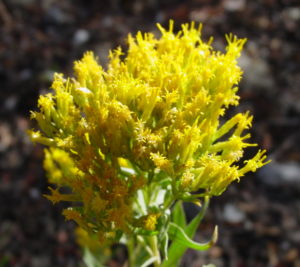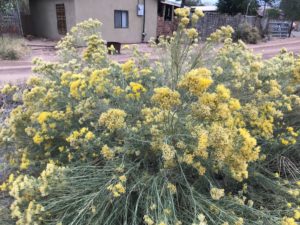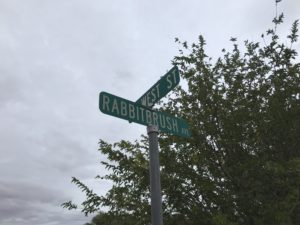
At the beginning of September, about the time ragweed season usually hits in Ohio, Tom and I started having awful allergic symptoms. Eyes watering, nose clogged up, sinuses hurting, sneezing and coughing, gunk in the back of our throats. We considered a sympathetic allergy reaction to Ohio ragweed. But when we noticed lots of other people having the same problem, we asked about it. Turns out Arizona, Utah, and New Mexico fill up with blooming, pollen-producing rabbitbrush in September and October.
Great. Another thing I’m allergic to. As if the list wasn’t long enough already.

Rabbitbrush is in the family Asteraceae, which is a whole bunch of stuff to which many people have severe allergic reactions. Ragweed and sagebrush are also in this family. Everyone in this family produces severe allergies in susceptible people. I guess the whole family likes to annoy. You can see the list here. If you are allergic to one thing on the list, you are probably allergic to everything on the list.
Rabbitbrush grows everywhere in the high desert. It grows along the road, in weed patches in towns, among the crops, in livestock fields. And it is a big, showy plant. Up to seven feet tall with bunches of yellow flowers. No matter where we have gone in the last month, we have found rabbitbrush.

Rabbitbrush is one of the signs of fall in the west. Just like ragweed and goldenrod in the east. And, just like in the east, we are eagerly awaiting frosts and snows which will finally defeat the evil rabbitbrush pollen and end our allergies for the winter. That’s about the only good thing I can say about snow and frost. Until they do, I will keep the allergy pills and the tissues close at hand.

The frosts are approaching…a few light ones here already…ahhhh, relief!
The only reason to look forward to snow – allergy relief!